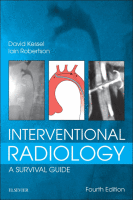Physical Address
304 North Cardinal St.
Dorchester Center, MA 02124

Purpose Guidewires are used in conjunction with catheters to navigate to a target, in addition they provide support and in the majority of cases, catheters, balloons and other devices are advanced into position over a previously positioned wire. Nearly all…

Purpose An access kit allows the least traumatic (i.e. smallest) initial needle puncture of the target and provides a method to convert the 22G puncture to standard 0.035-inch guidewire access. Description A typical set comprises: A one- or two-part 22G…

Purpose The ideal biopsy needle provides a diagnostic tissue sample at the lowest possible risk. Description Needles are usually characterised by their mechanism of action into aspiration and core biopsy needles. Aspiration needles Purpose To safely provide a sample of…

Purpose Puncture needles are vital for getting from the skin to the target as a prelude to access with a guidewire, aspiration of fluid or placement of a drain. Not all needles are equal and you need to know what…

Outpatient clinics are an essential component of contemporary practice. Some interventional radiologists have held outpatient clinics for many years but for others, this will be a new experience. The functions of the clinic should simply be extensions of various aspects…

Oh dear, we are still in the introductory section and already complications are rearing their ugly heads. One thing is certain, during a career in interventional radiology, there will be cases which do not follow the script. There are of…

Pain control – forward planning Many interventional radiology procedures do not require any analgesia; some procedures are intrinsically painful, especially if they are prolonged, and others are unpredictably uncomfortable. The procedure will be simpler and the patient less distressed if…

Sedation is used to relax patients during procedures but does not relieve or prevent pain. Hence, sedation is often used in combination with analgesia. Sedation is useful in patients undergoing prolonged interventional procedures and can also be valuable in anxious…

Most vascular computed tomography (CT) and magnetic imaging resonance (MRI), the vast majority of angiographic procedures, and many nonvascular interventions rely on contrast media to reveal the anatomy. Contrast media can be broadly classified according to their use and also…

Formal and clearly documented safety checks and briefings are mandatory and essential if you want to reduce predictable and preventable errors during procedures. It has been clearly demonstrated that safety checks performed immediately before and after every surgical operation reduce…